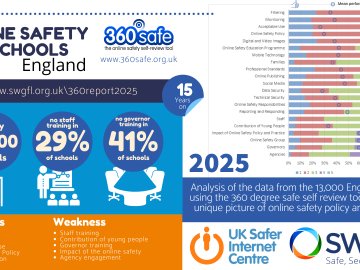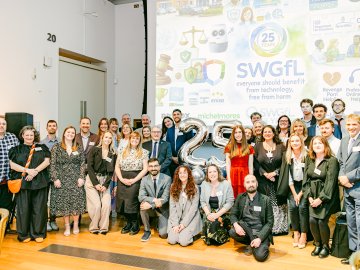Reputation is in itself only a farthing-candle, of wavering and uncertain flame, and easily blown out, but it is the light by which the world looks for and finds merit
So says James Russell Lowell in "Keats Literary Essays” during the mid-nineteenth century when one’s personal deeds, achievements, moral codes and standing was the measure of a person and an vital attribute in a society quick to make judgements. Reputation was a doorway to success; a doorway that rapidly shut when tarnished by scandal or impropriety. Rumour; society tittle-tattle; newspaper commentators were the instruments that hastened a person’s undoing and decline, whether true or not.
What is the importance of that “wavering and uncertain flame” now, in the second decade of the twenty-first century, when intimate details of our lives are often borne through a medium open for all to view and judge? Is reputation still important and, if so, how can we shape that when indeed the “world looks for and finds merit”.
Technology, social media in particular, is designed to drive our innate passions for connecting with others: evolution developed our sociality as a strategy for survival. Our dependency on others and our will to function socially is embedded within our DNA. Technology design over the last ten years has both empowered and exploited that. Many have a social media presence even before they are born; the word “sharenting” has emerged as a way of describing the stream of images and posts parents’ share of their children, regardless of consequence or consent.
In a positive frame, technology has enhanced that innate need for social connection and there are many benefits for a broadening society no longer limited by its geography, language, beliefs or culture.
However, the nature of the medium is characterised by properties that didn’t exist in Lowell’s time nor are critical part of physical social interaction.
Back in 2008, the researcher and digital anthropologist Dana Boyd, described the properties of these “networked publics” in her paper “Taken Out of Context”. These are:
Persistence
Online expressions are automatically recorded and archived. This permanency of content means that if it exists online it is very difficult to hide or delete information, images or records to get closure and move on. Despite some successful legal attempts in European Courts that challenged Google to delete search results that were no longer relevant to an individual - The Right to be Forgotten only applies to Google operations in Europe. Searching on a US version of the same search engine can reveal different results.
Wayback Machine is a web archive search engine that has stored 327 billion web pages since the inception of the internet: images; newsgroups; videos; sound; all in historical order.
Replicability
Content made out of bits can be duplicated. And copied and combined to create an historical profile of a person.
Scalability
The potential visibility of content in networked publics is great. This implies that if it can be seen by a wide group of people not only can it influence a broad demographic of opinion but it can also be accessed by that wide group of people. It becomes very visible and difficult to hide.
Searchability
Content in networked publics can be accessed through search. This makes deep research on an individual relatively accessible and easy, whether that’s digging the dirt to find skeletons in the closet or verifying decisions in appointing someone. Microsoft’s research seven years ago highlighted the now standard use of online research of candidates in the recruitment process. Amongst the reasons for not recruiting candidates were:
- Concerns about their lifestyle
- Unsuitable photos , videos, and information
- Comments criticising previous employers, co-workers, or clients
- Membership in certain groups and networks
- Discovered that information the candidate shared was false
- Poor communication skills displayed online
Ironically however, whilst these features can create and sustain a poor reputation, they can also be capitalised on to engender and manage one that is both positive and useful.
Understanding how search results are prioritised and how the technology works allows, with a little search engine optimisation (SEO), creation of a platform to “sell” one’s self. LinkedIn has lowered its age restrictions to 13, indicative of the way the platform can be used to build a positive online reputation. Other services like AboutMe and Lifestream perform a similar function.
Whilst you might not be able to get rid of the bad stuff, you can manage your positive personal content so that it is the first thing that people see. It may not deter the most ardent researcher, but many people do not go beyond the first page of search results returned. It’s a busy world after all.
Other benefits of a positive online reputation
- Those with a visible positive online presence are more successful in integrating into online social groups like gaming; expert interest groups; support groups etc.
- Other online users will trust your content and you will find hit rates and followers increasing e.g. YouTube content; Twitter; Instagram etc. This amplifies your voice and extends influence
- Creates trust when gaining support for online petitions; kickstarters or crowdsourcing
Education for a Connected World
Within the UKCCIS framework “Education for a Connected World”, we have attempted to establish a progression that considers reputation; how technology impacts on reputation and how to engender strategies to manage personal online information that others see.
It addresses:
- How and what information you publish
- Managing what others publish about you
- Dealing with what others publish on your behalf, either knowingly or not
- Responding to reputation challenge
Early Years to 7 years old:
- Ways in which information can be published online in different forms
- Considering which information we may or may not want others to see
- Simple decision making when using technology that considers image
- Finding help to resolve issues
7 to 11 years old:
- Examining self profile through searching
- Examining the profile of others through searching
- Ways in which personal information can be found using online technologies
- How personal information can be copied and re-purposed and how that affects reputation
- Simple strategies to shape positive online profile eg gaming or social media
11 to 14 years old:
- Risks and benefits of online reputation
- Context in relation to behaviour, expectations and how others view me
- More complex strategies to manage a “digital personality”
- Tools and services for monitoring online commentary that impact on a personal online profile
- Simple understanding of how the law governs what can or cannot be communicated online
14 to 18 years old
- More complex understanding of reputation and its advantages/disadvantages
- Effective challenge and understanding limitations depending on context
- Building an effective online presence using tools and services
- How to communicate and discuss legacy online content that may impact on reputation
- Understanding current UK legislation connected with reputation
- The difference between ethical, legal and criminal acts
SWGfL is currently in the process of developing supporting resources and content for each one of the 150 statements in the framework, managed through a FREE online portal for any adult to use.
In our next blog we will be taking a deeper look at the third strand of the framework, Online Bullying.






